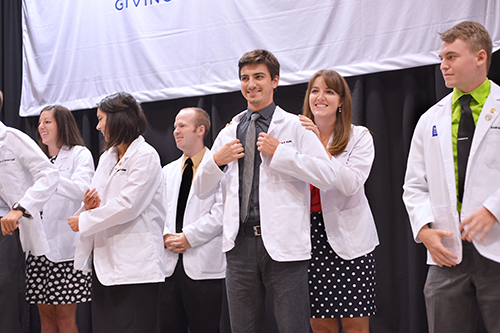Trans fats: Understanding the basic facts
 Trans fats are on many people’s minds these days because of the recent FDA announcement to reduce trans fats. Baylor College of Medicine registered dietitian Molly Gee helps clarify exactly what trans fats are and what they do.
Trans fats are on many people’s minds these days because of the recent FDA announcement to reduce trans fats. Baylor College of Medicine registered dietitian Molly Gee helps clarify exactly what trans fats are and what they do.
How and why are trans fats created?
Trans fat is made a process called hydrogenation, where hydrogen is added to vegetable oil to make them more solid. It’s used to increase the shelf life and flavor stability of various foods. Another name for trans fats as an ingredient is “partially hydrogenated oils.”
In what kinds of foods do trans fats appear?
Small amounts of trans fats occur naturally in some dairy foods and meat, but it is especially used in baked goods like pastries, cookies, cakes and crackers and also stick margarines and shortenings. The Nutrition Facts panel on foods lists any amount of trans fats over 0.5 mg.
What are the effects of trans fats?
Trans fat raises bad cholesterol, LDL (low-density lipoproteins), and lowers good cholesterol, HDL (high-density lipoprotein). Overall, it increases the risk of developing heart disease.
What are substitutes for trans fats?
Products that contain plant sterols and stanols – substances that occur naturally and have powerful cholesterol-lowering properties – are a better choice that has been shown to reduce the risk of heart disease. For example, sterol-fortified spreads are a substitute for margarine with trans fats or butter.
What should people know about trans fats that they might not know already?
The easiest way to limit trans fat is to eat a diet rich in plant foods like fruits, vegetables, whole-grain, high fiber foods. Choose fat-free and low-fat dairy products, lean meats and poultry (without skin), and have fish twice a week.
-By Jordan Magaziner



